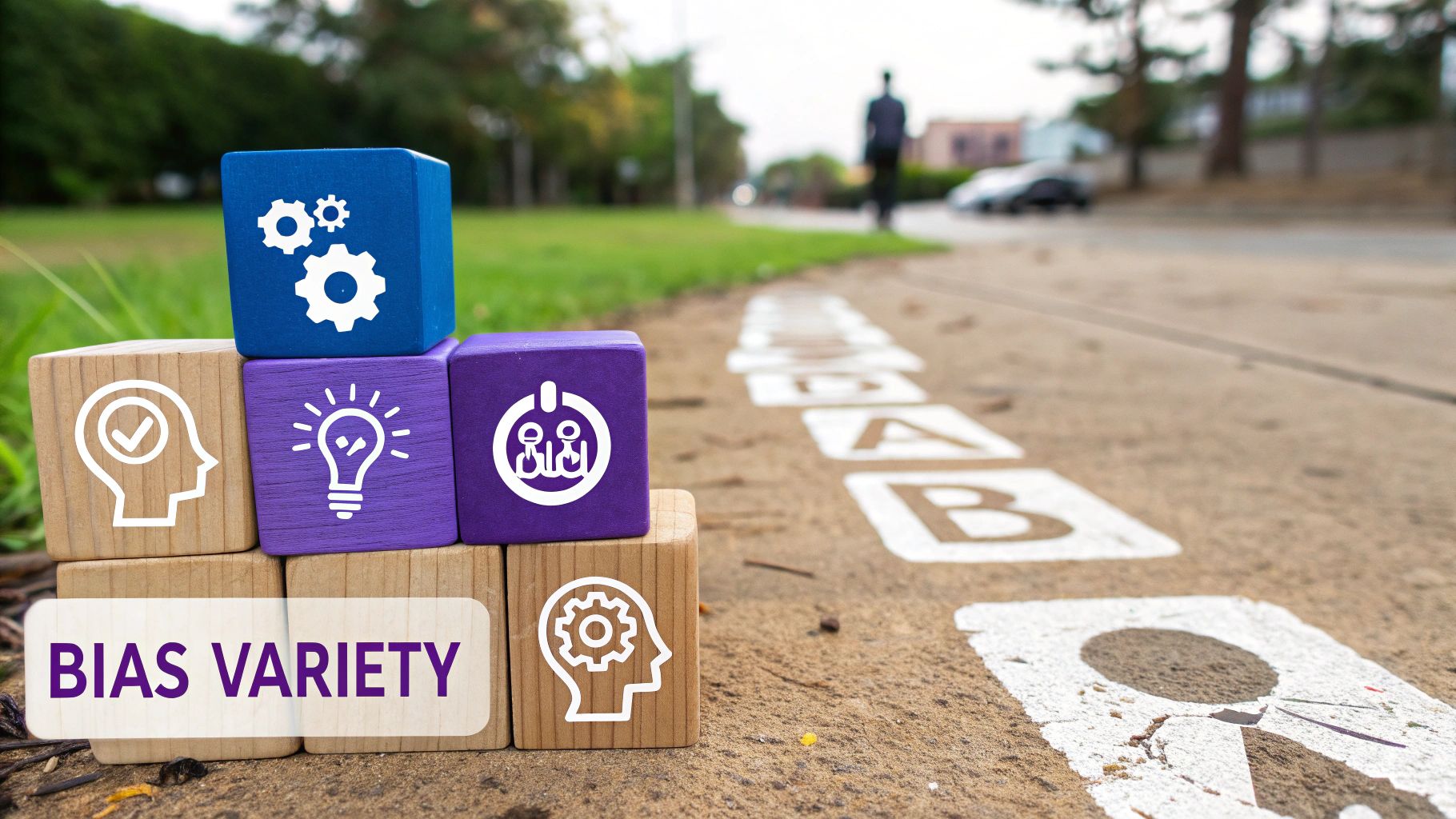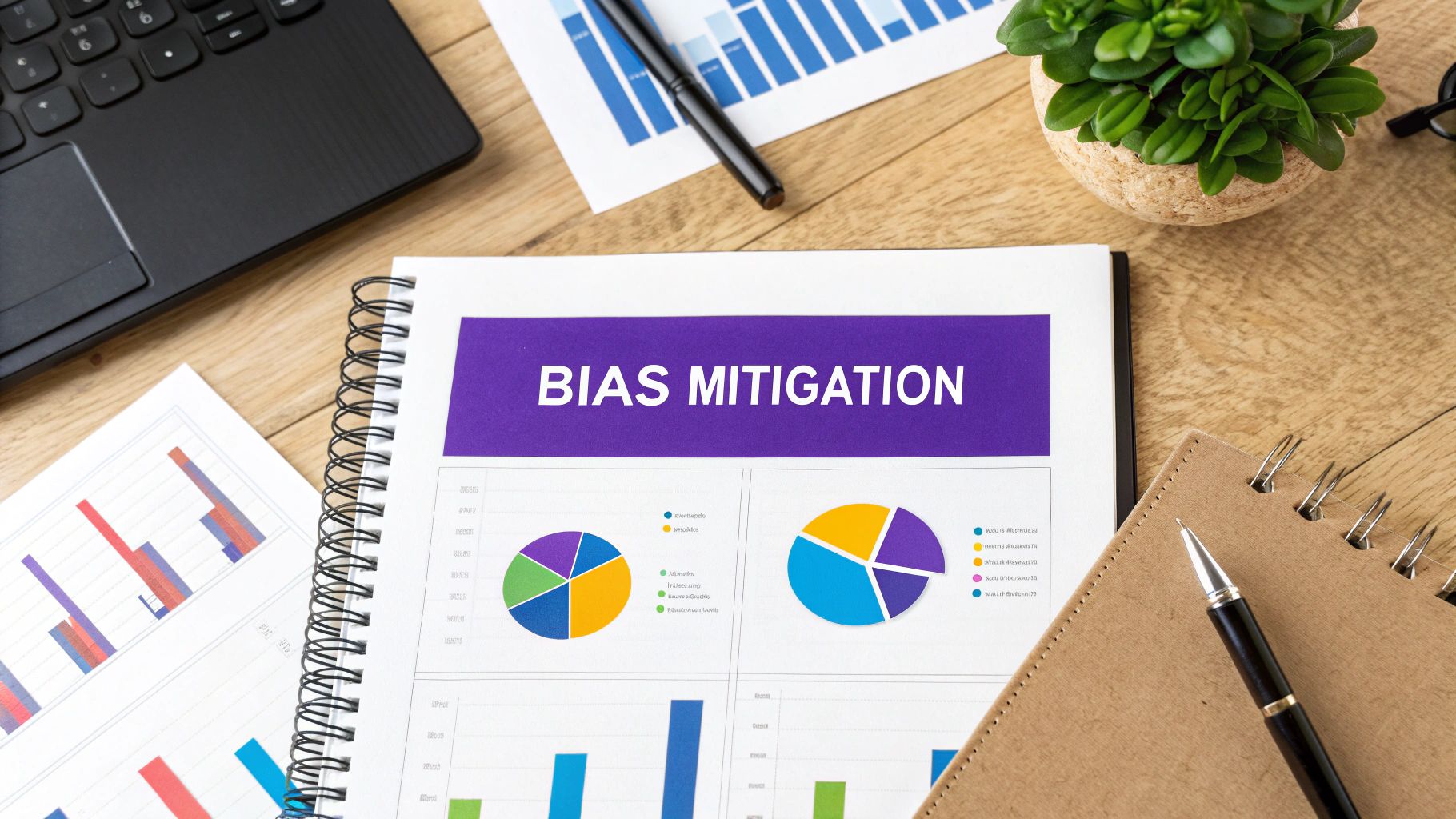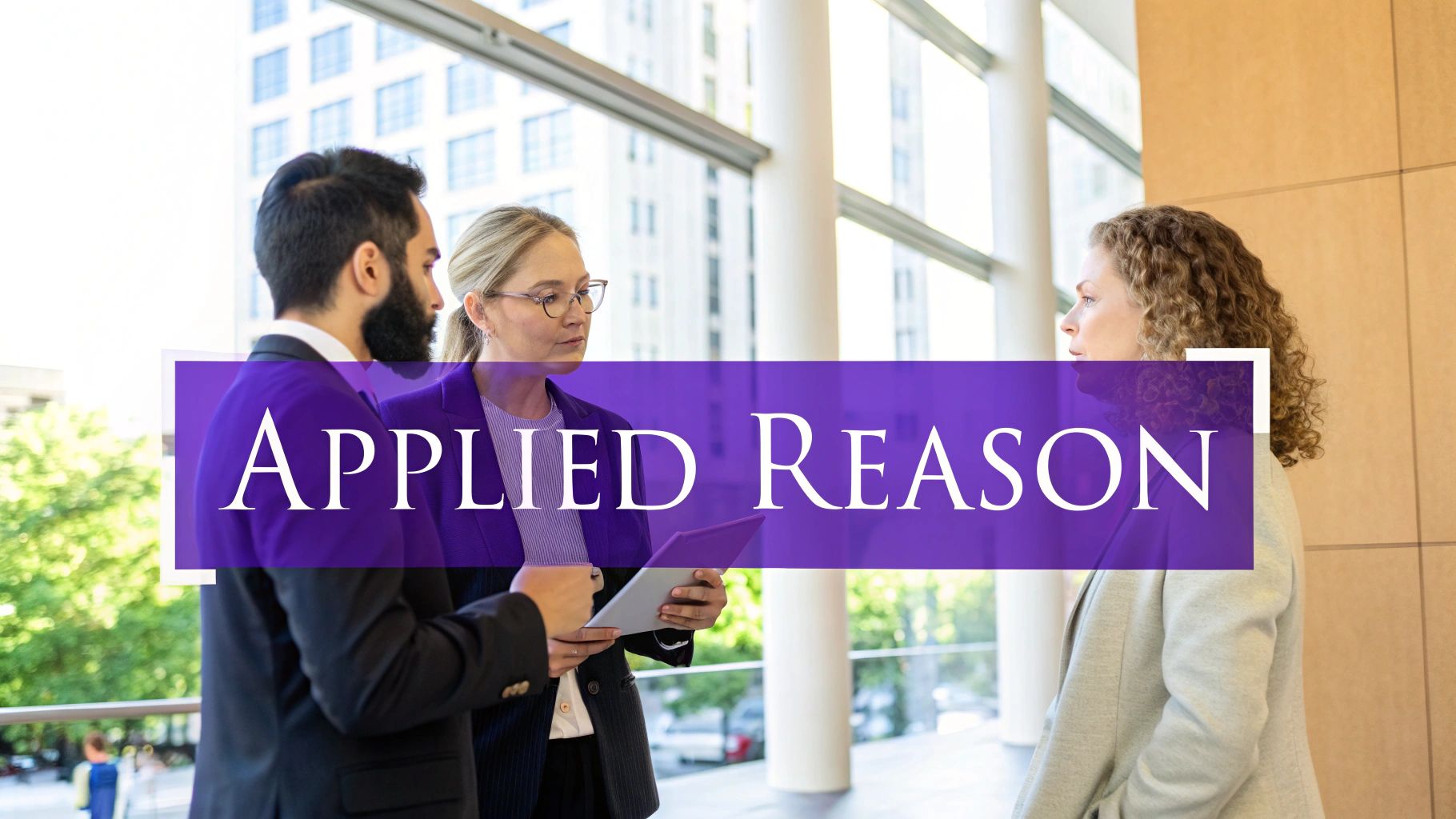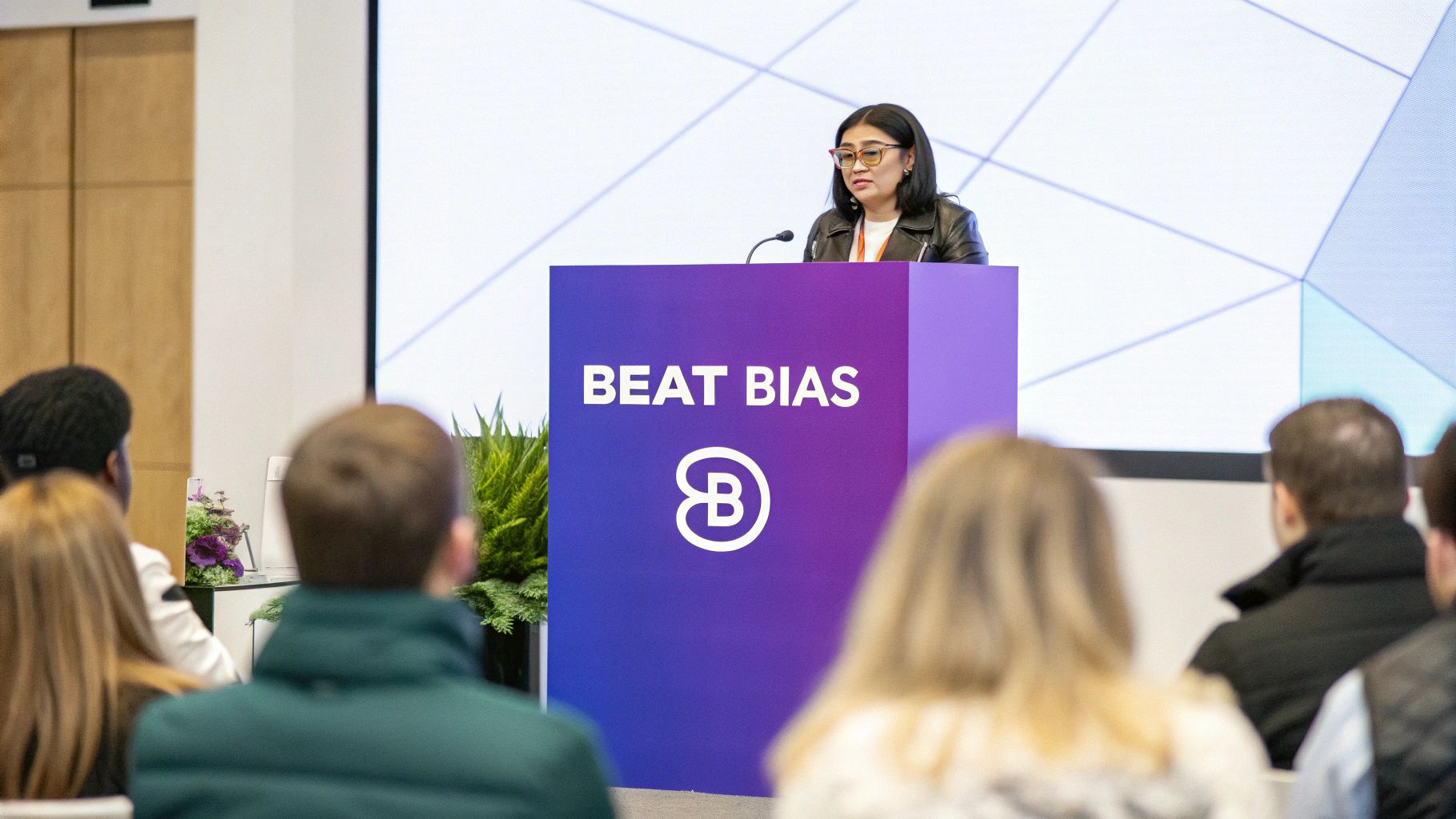The Hidden Forces Shaping Your Decisions

Our brains are incredibly complex. They constantly process information and make choices, often without our conscious awareness. This rapid-fire decision-making relies on mental shortcuts called cognitive biases.
These biases, while efficient, can sometimes lead us astray. They can significantly influence our judgment and lead to less-than-ideal choices. This section explores the psychology behind cognitive biases and how they shape our everyday lives.
Why Do We Have Cognitive Biases?
These mental shortcuts developed for a good reason. In a world saturated with information, biases help us process things quickly. They allow us to make decisions without getting bogged down in endless analysis.
For example, imagine walking down a dark street and hearing a sudden noise. You might instantly feel threatened and increase your pace. This "better safe than sorry" reaction is driven by a cognitive bias likely developed to protect our ancestors.
The Downside of Biases
While helpful in some situations, these same biases can create problems in others. They can lead to poor judgments, causing us to miscalculate risks, hold onto outdated beliefs, or make impulsive purchases.
It's important to remember that cognitive biases aren't about intelligence. They're a fundamental part of how our brains operate. Everyone experiences them, regardless of their intellectual abilities.
The Impact of Cognitive Biases
Cognitive biases have been extensively studied, particularly in the field of decision-making. Researchers like Kahneman and Tversky have explored how biases impact our judgment and choices. Their work, starting in the 1970s, identified numerous biases that affect our decision-making processes.
One common example is overconfidence bias, where individuals overestimate the accuracy of their own judgments. This bias can lead to poor outcomes in areas like finance and medicine, from risky investments to inaccurate diagnoses. Research shows that even high cognitive ability doesn't protect against these biases. Learn more about this research here.
Mitigating the Influence of Biases
Understanding these biases is the first step towards making more informed and effective decisions. By recognizing these patterns in our thinking, we can start to reduce their impact.
This awareness allows us to make choices based on logic and reasoning, rather than unconscious impulses. Recognizing our biases is essential for navigating the complexities of modern life and improving our decision-making abilities.
The Decision Destroyers: Biases That Derail Your Thinking

We all like to think we make rational decisions. But often, hidden biases shape our choices without us even realizing it. This section explores common cognitive biases that can sabotage our decision-making. Understanding these biases is the first step to making better choices.
Confirmation Bias: Seeing What We Want to See
Confirmation bias is our tendency to favor information confirming existing beliefs. We seek out information supporting our preconceived notions and dismiss contradicting evidence. This can lead to decisions based on incomplete or skewed information.
For example, imagine you believe a particular stock is a good investment. You might be more likely to read articles praising the company. You might also ignore warnings about its financial instability.
Anchoring Bias: The Power of First Impressions
Anchoring bias describes how we overemphasize the first piece of information we receive (the "anchor"), even if irrelevant. This anchor influences later judgments and decisions.
Imagine negotiating a salary. The first number mentioned, even if arbitrarily high or low, will significantly impact the final agreement.
Availability Bias: Overestimating the Familiar
Availability bias causes us to overestimate the likelihood of easily recalled events. This often means overestimating vivid or emotionally charged events. We especially overestimate events we've personally experienced or heard about recently. This can lead to irrational fears and poor risk assessments.
For instance, after seeing a news report about a plane crash, you might be more afraid of flying, even though statistically, it's very safe.
The following table summarizes these and other common cognitive biases:
Common Cognitive Biases in Decision Making
| Cognitive Bias | Definition | Impact on Decision Making | Examples |
|---|---|---|---|
| Confirmation Bias | Favoring information that confirms existing beliefs | Decisions based on incomplete or skewed data | Ignoring negative reviews of a favored product |
| Anchoring Bias | Overemphasizing the first piece of information received | Negotiations swayed by initial offers | Setting a price based on a competitor's irrelevant pricing |
| Availability Bias | Overestimating the likelihood of easily recalled events | Irrational fears and poor risk assessment | Fear of flying after a publicized plane crash |
| Bandwagon Effect | Adopting beliefs and behaviors due to their popularity | Following trends without critical evaluation | Investing in a popular stock despite poor fundamentals |
| Halo Effect | Letting one positive characteristic influence overall perception | Overlooking negative aspects due to a positive first impression | Assuming a well-dressed person is competent |
| Loss Aversion | Feeling the pain of a loss more strongly than the pleasure of an equivalent gain | Making risk-averse decisions to avoid potential losses | Holding onto a losing investment for too long |
This table highlights how various biases can skew our thinking and ultimately lead to suboptimal decisions. Recognizing these patterns is crucial for improving our judgment.
Cognitive biases in data analysis and decision-making can also lead to significant errors. For example, confirmation bias, evident in the Theranos case, involves selectively seeking supporting information for pre-existing beliefs. Learn more about overcoming cognitive bias. Reporting bias, where data presentation is skewed, is another issue. These can lead to misleading conclusions.
The Impact of These Biases
These biases affect our decisions daily, from minor choices like what to eat for lunch to major life decisions. They can lead to missed opportunities, financial losses, and even relationship problems. Check out our guide on How to master managing remote teams. This understanding is crucial for anyone striving for informed, rational decisions. It's important to recognize these biases aren't flaws, but inherent aspects of human cognition. By being aware of them, we can mitigate their influence.
Recognizing and Mitigating Biases
The first step towards better decision-making is recognizing these biases. By understanding how they operate, we can identify when they influence our thinking. This requires self-awareness and a willingness to question our assumptions.
However, simply knowing about biases isn't enough. We need practical strategies to mitigate their effects. This involves seeking diverse perspectives, actively challenging our beliefs, and using structured decision-making frameworks.
When Feelings Hijack Facts: The Emotional Bias Connection
The idea that we make purely rational decisions is a myth. Our emotions play a significant role, interacting with cognitive biases to influence our choices. This section explores how our emotional state can dramatically affect our decision-making.
The Emotional Landscape of Decision-Making
Our emotions act like a filter through which we interpret information. When we're stressed, certain biases, like confirmation bias, can become stronger. We might hold on more tightly to what we already believe, looking only for information that supports our current view. This can result in poor decisions because we aren’t considering all perspectives.
Stress can also trigger other biases. For example, under pressure, we might over-rely on availability heuristics. This means we overestimate the likelihood of bad things happening simply because those scenarios are easier to recall. This can make us overly cautious and risk-averse in our choices.
Anxiety's Narrowing Effect
Anxiety, much like stress, can significantly impact how we make decisions. It tends to narrow our focus, making it difficult to consider all possible options. This limited perspective can blind us to potential opportunities and alternative solutions.
For example, imagine feeling anxious about a job interview. You might fixate on potential negative outcomes, such as not answering questions well or making a bad impression. This focus on the negative could cause you to overlook your strengths and qualifications, hurting your interview performance.
The Unexpected Downside of Positive Emotions
Even positive emotions can unexpectedly influence our decisions. Excitement or euphoria can lead to overconfidence and increased risk-taking. We might underestimate potential downsides because we’re feeling overly optimistic.
This doesn't mean positive emotions are bad. However, we must be aware of how they can affect our judgment. Just as negative emotions can lead to poor choices, unchecked positive emotions can also disrupt our decision-making.
Affective Bias and Its Influence
Affective bias, which prioritizes negative information, can also affect decision-making. This bias is seen across diverse groups and influences how we process outcomes. Research suggests we adjust our learning based on the perceived value of information from outcomes, often giving more weight to negative events. This can lead us to overestimate risks or underestimate benefits. Learn more about this here.
Regulating Emotions for Clearer Thinking
Recognizing how emotions influence our decisions is essential. High-performing executives and negotiators often use emotional regulation techniques to think clearly under pressure. These techniques can include mindfulness practices, deep breathing exercises, and reframing negative thoughts.
By learning to manage our emotions, we can lessen the impact of biases. This emotional control allows us to make more objective, rational decisions, particularly in high-stakes situations. It's about creating a separation between our feelings and our choices, enabling us to make decisions based on facts and logic, not just emotional impulses.
Uncovering Your Bias Blind Spots: Self-Assessment Tools

Recognizing how emotions influence our decisions is the first step toward understanding our biases. But simply knowing biases exist isn't enough. We need to actively search for our bias blind spots. This section offers practical methods for identifying those biases affecting your decisions.
Self-Reflection and Decision Journaling
Self-reflection is one effective way to uncover your biases. After making a decision, take some time to analyze the process. Ask yourself some key questions: What information did I prioritize? Did I consider all viewpoints? Were my emotions a factor?
Decision journaling takes self-reflection a step further. By documenting your decisions, your rationale, and the outcomes, you create a valuable record. This record can reveal recurring patterns and hidden biases that shape your choices.
Research-Backed Assessment Tools
Beyond personal reflection, research-backed tools can help pinpoint specific biases. Many Fortune 500 companies and behavioral economists use structured assessments. These assessments, often involving scenarios or questionnaires, are designed to expose unconscious biases.
These tools can be adapted for personal use. Several online tests and quizzes offer a simplified way to explore your tendencies toward different biases. This emphasis on self-assessment highlights the importance of understanding individual differences in cognitive biases.
Research shows that measuring individual differences is essential for developing targeted interventions. Studies have even shown that susceptibility to biases isn't solely about intelligence. Explore this topic further here.
Bias Audits and Feedback Systems
Successful leaders often use regular bias audits. This involves systematically reviewing past decisions to identify where biases might have influenced the outcome. Building feedback systems is also crucial. Seek input from trusted colleagues or mentors who can offer different perspectives and potentially identify your blind spots.
Actionable Frameworks for Mapping Your Biases
To effectively address biases, you need a way to organize your insights. Developing actionable frameworks can help map your most influential biases. One approach is to create a personal bias profile. List your most common biases and their potential impact.
Tracking your progress is essential. Note how specific interventions influence your decisions. This creates a powerful feedback loop, allowing you to refine your approach and improve your decision-making skills.
The following table provides examples of self-assessment tools that can help you uncover your biases:
Self-Assessment Tools for Cognitive Bias: A comprehensive collection of tools and techniques to identify personal cognitive biases in decision-making
| Assessment Tool | Biases Measured | Implementation Method | Reliability Score |
|---|---|---|---|
| Implicit Association Test (IAT) | Unconscious biases related to race, gender, age, etc. | Online test measuring reaction times to associations | Varies depending on the specific test |
| Cognitive Reflection Test (CRT) | Tendency to rely on intuition versus analytical thinking | Short questionnaire with logic problems | High test-retest reliability |
| Decision Journaling | Personal biases influencing specific decisions | Regularly documenting decisions, rationale, and outcomes | Dependent on the thoroughness of journaling |
| Feedback from Trusted Sources | Biases impacting behavior and decision-making | Soliciting input from colleagues, mentors, or friends | Varies depending on the source and relationship |
This table offers a starting point for exploring different self-assessment methods. Each tool provides unique insights into potential biases.
By combining self-reflection, research-backed tools, regular audits, and actionable frameworks, you can gain a deeper understanding of your bias blind spots. This awareness allows you to build more effective decision-making strategies. You can make choices based on logic and evidence, rather than being unconsciously steered by hidden biases.
Bias-Busting Tactics That Actually Work

Understanding cognitive biases is important. But knowing they exist is only half the battle. This section explores practical strategies to minimize their impact on your decisions. These are proven techniques experts use to improve decision quality.
Pre-Mortem Analysis: Planning for Failure
Pre-mortem analysis, developed by psychologist Gary Klein, is a unique approach. It involves envisioning a future where your project has failed. Then, you work backward to determine the potential causes. This helps break the hold of optimism bias by forcing you to consider what could go wrong.
Imagine a team launching a new product. Before the launch, they conduct a pre-mortem. They brainstorm every possible way the launch could fail, from marketing mishaps to technical glitches.
This process helps teams proactively address these potential problems and develop backup plans. By anticipating failure, you significantly increase your chances of success.
Structured Decision Frameworks: Creating a Roadmap
Making important decisions can feel overwhelming. Structured decision frameworks provide a step-by-step approach, offering a systematic way to evaluate options and lessen the influence of biases. One example is a decision matrix, where you weigh and rank criteria for each choice.
These frameworks help prevent impulsive decisions based on emotions or biases. They also improve transparency and accountability within teams. A clear roadmap for decision-making is crucial for making sound choices. For more collaborative techniques, check out this resource: How to master virtual brainstorming.
Perspective-Taking and Devil's Advocacy
Considering different viewpoints is essential for effective decision-making. Perspective-taking involves actively trying to understand alternative viewpoints. This helps challenge your assumptions and overcome confirmation bias, where you only seek information supporting your existing beliefs.
Devil's advocacy is another valuable technique. It assigns someone the role of challenging the popular opinion. This ensures all sides of an issue are explored thoroughly.
Both techniques enhance decision-making by encouraging critical thinking and a more balanced evaluation of options. However, it’s important that these roles are embraced genuinely, not just as a formality.
Decision Checklists and Cognitive Debiasing Training
Overlooking crucial factors can lead to poor decisions. Decision checklists provide a structured approach to ensure all important considerations are addressed. These checklists act as safeguards against biases like anchoring bias or availability bias.
Cognitive debiasing training can educate individuals about different types of biases. This training also provides practical strategies for recognizing and minimizing their influence.
These tools are particularly helpful for high-stakes decisions. By implementing these techniques, organizations can significantly improve the quality and consistency of their decisions.
Technological Tools: Leveraging Technology Wisely
Technology can be a powerful ally in reducing the impact of biases. Some tools use algorithms to analyze data and highlight potential blind spots. Other platforms facilitate structured brainstorming and decision-making, minimizing the effects of groupthink.
However, it’s essential to proceed with caution. Not all technological solutions are created equal. Some may unintentionally worsen biases by reinforcing existing patterns. Careful selection and implementation of appropriate tools are key.
By incorporating these bias-busting tactics into your decision-making, you can move beyond simply knowing about biases to actively overcoming them. This results in more informed, rational choices and ultimately, better outcomes. Remember, recognizing and mitigating biases is an ongoing process. Consistent effort and awareness are essential for making truly effective decisions.
Group Think: When Teams Amplify Cognitive Bias
Individual cognitive biases, like confirmation bias or anchoring, can significantly impact our decisions. However, these biases become even more potent in group settings. This section explores how team environments can amplify these biases, leading to poor decisions even in groups of intelligent individuals.
The Dangers of Groupthink
Groupthink, a term coined by social psychologist Irving Janis, describes a phenomenon where the desire for harmony within a group overrides critical thinking and realistic appraisal of alternatives. This can lead to disastrous outcomes, as demonstrated in historical examples like the Bay of Pigs invasion.
In such situations, dissenting opinions are suppressed, and the group develops an illusion of invulnerability. This fosters excessive optimism and a willingness to take on excessive risks. These risks might seem reasonable within the echo chamber of the group, but from an outside perspective, they can be reckless.
Shared Information Bias: Focusing on the Known
Another bias amplified in teams is the shared information bias. This bias describes the tendency of groups to spend more time discussing information everyone already knows, rather than exploring new or unique perspectives.
This dynamic can lead to incomplete analyses and missed opportunities for innovation. You might be interested in: How to master group brainstorming techniques. By focusing on common knowledge, teams reinforce existing biases and fail to incorporate the full range of available information.
The Influence of Status Differences
The presence of status differences within a group can exacerbate cognitive biases. Individuals in higher positions often hold more sway in discussions, even if their opinions are flawed. This can stifle dissent, as lower-ranking members may hesitate to challenge those in authority.
This dynamic creates a situation where crucial information might be withheld or dismissed due to social pressure. Even when junior team members have valuable insights, the group's decision-making process might prevent them from sharing those insights effectively.
Diversity Alone Is Not Enough
While diverse teams have the potential to overcome collective blind spots, diversity alone is insufficient. Simply having people from different backgrounds in a room doesn't automatically neutralize biases.
Teams need to actively foster an inclusive environment where all members feel comfortable sharing their perspectives. This requires clear communication protocols, respectful discussion, and a willingness to challenge assumptions. Without a culture of open communication, diversity can become a superficial characteristic rather than a driver of better decisions.
Protocols for Effective Team Decision-Making
High-performing teams often adopt specific protocols to mitigate group biases. These include:
- Structured discussions: Establishing clear agendas and facilitating balanced participation helps ensure all voices are heard.
- Contrarian roles: Assigning individuals to play devil's advocate can help uncover weaknesses in proposed plans and stimulate critical thinking.
- Decision processes: Implementing structured decision-making frameworks, such as weighted scoring matrices, promotes objectivity and reduces the influence of biases.
By adopting these protocols, teams can harness the benefits of collective wisdom while minimizing the negative effects of group bias. This leads to more informed, robust decisions.

